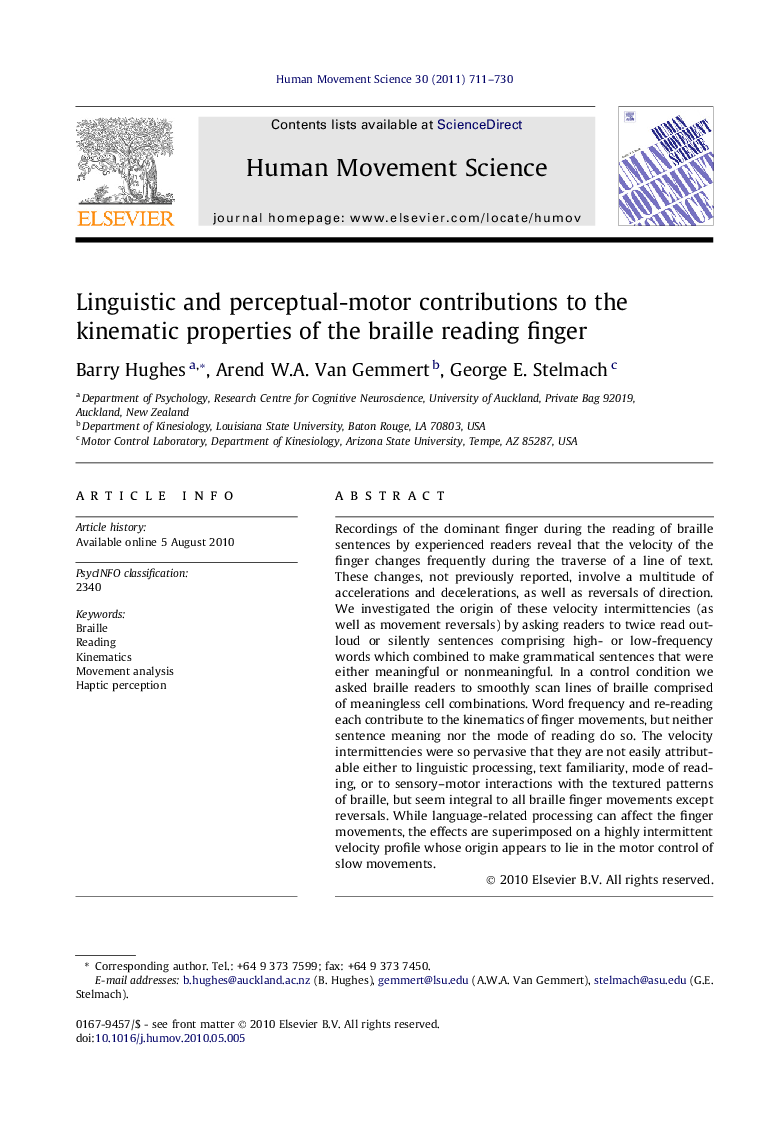| Article ID | Journal | Published Year | Pages | File Type |
|---|---|---|---|---|
| 928571 | Human Movement Science | 2011 | 20 Pages |
Recordings of the dominant finger during the reading of braille sentences by experienced readers reveal that the velocity of the finger changes frequently during the traverse of a line of text. These changes, not previously reported, involve a multitude of accelerations and decelerations, as well as reversals of direction. We investigated the origin of these velocity intermittencies (as well as movement reversals) by asking readers to twice read out-loud or silently sentences comprising high- or low-frequency words which combined to make grammatical sentences that were either meaningful or nonmeaningful. In a control condition we asked braille readers to smoothly scan lines of braille comprised of meaningless cell combinations. Word frequency and re-reading each contribute to the kinematics of finger movements, but neither sentence meaning nor the mode of reading do so. The velocity intermittencies were so pervasive that they are not easily attributable either to linguistic processing, text familiarity, mode of reading, or to sensory–motor interactions with the textured patterns of braille, but seem integral to all braille finger movements except reversals. While language-related processing can affect the finger movements, the effects are superimposed on a highly intermittent velocity profile whose origin appears to lie in the motor control of slow movements.
